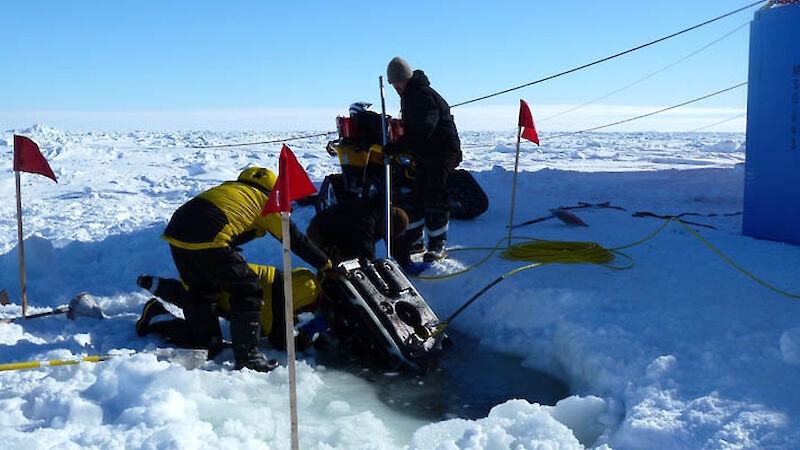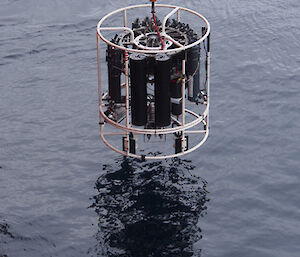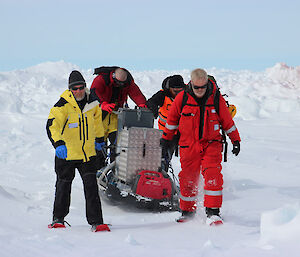How do Antarctic krill make it through the long, dark months of winter?
Australian Antarctic Division scientists this week will join an international, German-led expedition to investigate the relationship between sea ice and the winter survival of Antarctic krill in the Southern Ocean.
A Division team of six scientists and support technicians will spend eight weeks in the north-western Weddell Sea aboard the Alfred Wegener Institute icebreaker, RV Polarstern.
Sea ice scientist, Dr Klaus Meiners, will measure ice thickness and make under-ice observations using a Remotely Operated vehicle (ROV).
“We know that sea ice plays a critical role in the dynamics of the Southern Ocean, so the data we collect on this trip will help us explore the relationship between sea ice and krill,” Dr Meiners said.
Researchers will study the sea ice zone and the abundance, physiological conditions and genetics of Antarctic krill. Working on ice floes, they will use the ROV to view algae attached to the rugged underside and film krill.
Algae are a key food source for krill which, in turn, is a keystone species of the Southern Ocean ecosystems being the major diet for whales, seals and penguins.
As the commercial krill fishery is expected to expand, scientists are seeking to better understand the abundance and viability of the tiny crustaceans to improve management of this fishery in a changing environment.
Molecular biologist Dr Simon Jarman and marine biologist Mr Rob King will study the ‘clock genes’ that regulate the daily and seasonal internal rhythms in krill, and observe the influence of daylight on feeding and development.
Their research is part of a project headed by Dr Bettina Meyer of Germany’s Alfred Wegener Institute.
“This voyage offers an important and valuable opportunity to study krill in these darker months of the year,” Dr Jarman said.
As well as tracking krill via the ship’s echo sounder, Mr King and his colleagues will deploy cameras down to the ocean floor to gauge the density of krill swarms.
At the same time, divers will go below the ice to collect krill for study during the voyage, while preserved samples will be brought back for further research at the Australian Antarctic Division.
The voyage departs from Chile today and returns to Cape Town, South Africa in mid-October.



